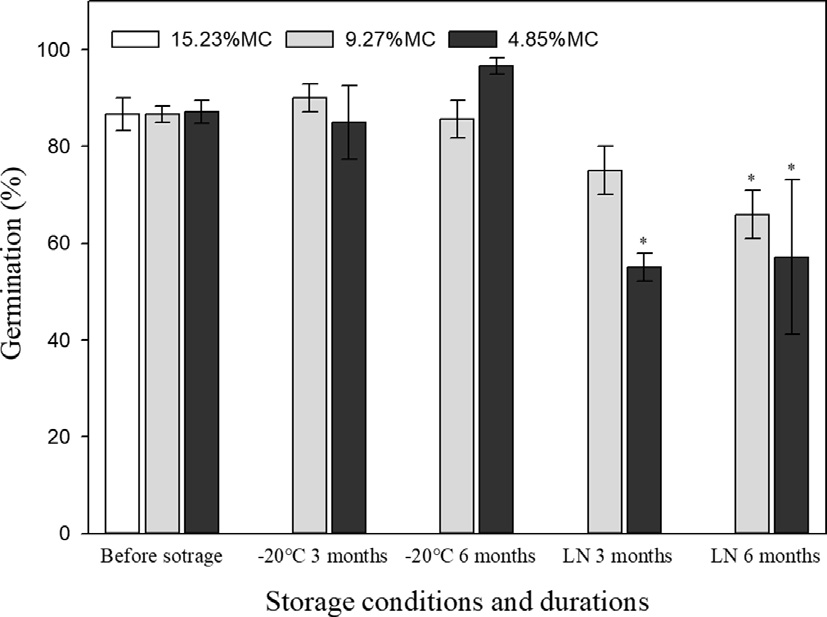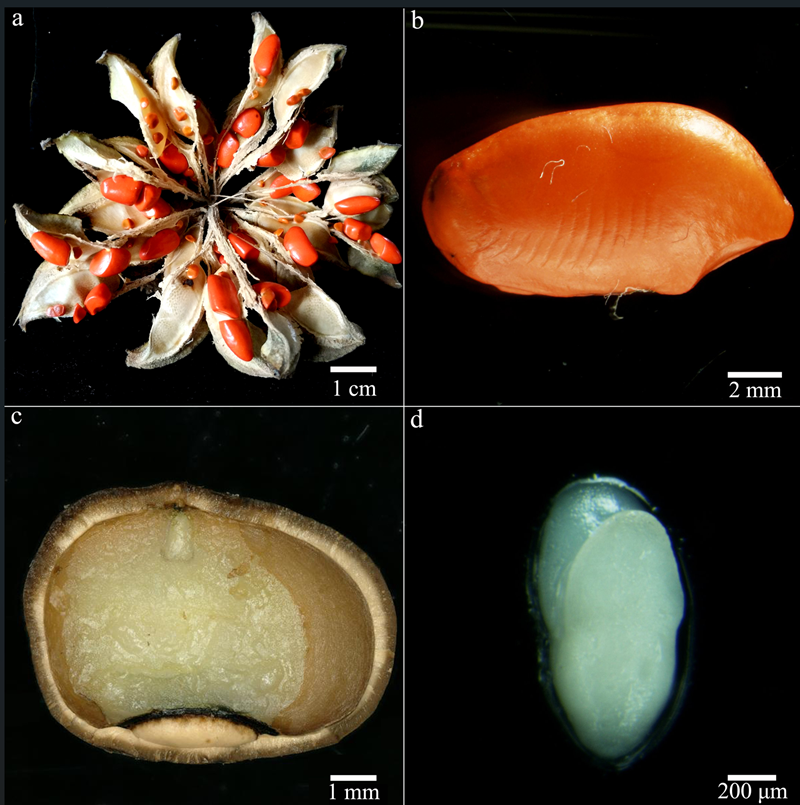According to the IUCN Red List, around 38.5% of Magnolia species are Critically Endangered or Endangered. Both ex situ and in situ measures are necessary for conservation of these species. However, many species of Magnoliaceae were reported to produce intermediate and recalcitrant seeds (Royal Botanic Gardens Kew, 2019) which cannot be preserved in conventional seed banks.
Magnolia sinica is a critically Endangered species narrowly distributed along the China-Vietnam border. Seed dormancy and germination were investigated at the Germplasm Bank of Wild Species (GBOWS), Kunming Institute of Botany, Chinese Academy of Sciences. Freshly matured seeds germinated to ca. 86.5% at 25/15°C but poorly at 30°C; GA3 and moist chilling promoted germination significantly at 20°C (Fig. 1). Embryos grow at temperatures (alternating or constant) between 20°C and 25°C. M. sinica seeds possibly have non-deep simple morphophysiological dormancy (MPD) (Baskin and Baskin, 2014).
Seeds of M. sinica maintain a high germination rate when the moisture content reduced to 9.27% and 4.85% as well as after six-month storage at -20°C and in liquid nitrogen, including recovery in vitro as excised embryos.
This data (Lin et al. 2022) along with our other findings (unpublished data) imply that seeds of some Magnolia species are orthodox and can be banked either at -20°C or in liquid nitrogen. Collecting mature seeds of Magnolias is critical for successful seed preservation. GBOWS have started screening the seed storage behavior of Magnolias for better banking practice of those endangered species in China.

Figure 1: Germination (mean ± standard error) of Magnolia sinica seeds at 25/15°C on agar with 200 mg/L gibberellic acid (GA3) after storage at -20°C and in liquid nitrogen (LN) for 3 and 6 months with different moisture contents (MC). Asterisk (*) indicates significant difference compared with the germination of freshly matured seeds.

Fruit, seed and embryo morphology of Magnolia sinica, a) dehiscent fruit, b) seed, c) profile of the seed, d) excised embryo (Photo credit: GBOWS).
References:
Baskin, C.C. & Baskin, J.M. (2014) Seeds: Ecology, Biogeography, and Evolution of Dormancy and Germination, second ed. Elsevier/Academic Press, San Diego.
Lin, L., Cai, L., Fan, L., Ma, J.C., Yang, X.Y., Hu, X.J. (2022) Seed dormancy, germination and storage behavior of Magnolia sinica, a plant species with extremely small populations of Magnoliaceae. Plant Diversity. 44(1): 94-100. https://doi.org/10.1016/j.pld.2021.06.009
Royal Botanic Gardens, Kew (2019) Seed Information Database (SID). Version 7.1.
(Editor:YANG Mei)




